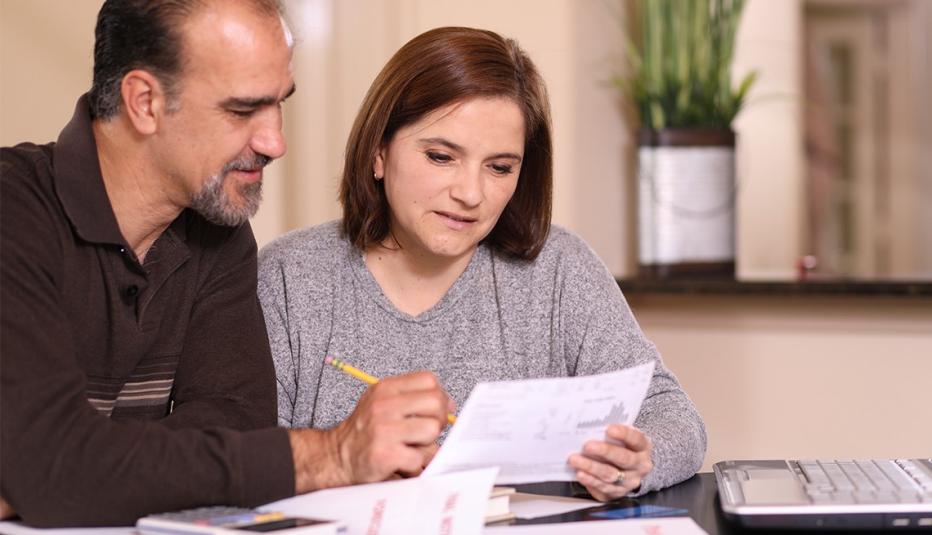AARP Hearing Center


Medicare provides vital health care coverage to most adults ages 65 and older, in addition to some younger persons with disabilities or end-stage renal disease. The program pays for a portion of the costs for certain inpatient and outpatient health care services and, for many people, prescription drug costs.
Yet, contrary to a common belief, Medicare does not cover all health care–related costs. Using the 2019 Medicare Current Beneficiary Survey (MCBS), this Spotlight highlights the high out-of-pocket spending for health care that many individuals with traditional Medicare face (due to data limitations, the analysis does not examine out-of-pocket spending by people enrolled in Medicare’s private plan option, known as Medicare Advantage or MA). The report uses available data to detail actual health care spending by people enrolled in traditional Medicare and shows how large the financial burden of health care is for this group of Medicare beneficiaries based on costs relative to income
Key Takeaways
- Many traditional Medicare beneficiaries face significant out-of-pocket expenses to meet their health care needs. Health care expenses can create a considerable financial burden for many people with traditional Medicare.
- In 2019, just as in the two preceding years, half of those with traditional Medicare spent at least 16 percent of their income on health care.
- One in 10 traditional Medicare beneficiaries spent at least 52 percent of their income on health care.
- Overall, in 2019, people with traditional Medicare spent an average of $6,663 on insurance premiums and medical services.
- One in 10 people with traditional Medicare spent at least $11,767 in 2019, and the top quarter of spenders paid an average of $15,449.
Reasons Behind Out-Of-Pocket Health Care Costs in Traditional Medicare
Several factors explain why many people with traditional Medicare pay significant amounts out of pocket for health care:
- Even though the program offers fairly comprehensive coverage, traditional Medicare does not have a limit on beneficiaries’ annual out-of-pocket spending. Consequently, people with traditional Medicare can face high expenses, especially if they become ill and need more medical services.
- People with traditional Medicare generally pay a monthly premium for physician (Part B) coverage (in 2019, the standard Part B premium was $135.50 per month or $1,626 for the year) and for prescription drug coverage (Part D, for which the premium varies by plan). A small share of beneficiaries also pay a monthly premium for inpatient hospital (Part A) coverage (in 2019, the full premium was $437 per month or $5,244 for the year).
- Traditional Medicare requires that beneficiaries contribute to the cost of their care in the form of deductibles, coinsurances, and copayments.
- Many people covered under traditional Medicare buy private supplemental insurance—such as Medigap or employer-sponsored retiree coverage—to help pay their out-of-pocket costs for Medicare-covered services. Premiums for such additional insurance can be high.
- Beneficiaries pay substantial amounts out of pocket for services and devices not covered by traditional Medicare (e.g. hearing aids, eyeglasses, dental care, and long-term care services).
Traditional Medicare Beneficiaries’ Spending for Health Care
Out-of-pocket costs are significant for many Medicare beneficiaries. People covered by traditional Medicare paid an average of $6,663 for health care in 2019. They spent almost half of that money (48 percent) on Medicare or supplemental insurance premiums. The remainder was out-of-pocket spending for health care services that Medicare covers (24 percent) and for those that the program does not cover (28 percent).
The amount that people with traditional Medicare spend on health care varies based on their health status and whether they have a chronic condition. Perhaps unsurprisingly, for example, the data show that in 2019, traditional Medicare beneficiaries in fair or poor health were especially likely to face significant expenses. They paid an average of $3,359 out of pocket for health care services—significantly more than the amount incurred by people in excellent or very good health ($2,206). People with Parkinson’s disease spent more on health care services (an average of $3,534) than those with any other type of illness. Out-of-pocket spending was considerable for people with conditions that are common among Medicare beneficiaries, including congestive heart failure ($3,513), diabetes ($2,779), hypertension ($2,653), and high cholesterol ($2,601).
Financial Burden by Share of Income
Half of the people with traditional Medicare coverage spent 16 percent or more of their income on premiums and health care services combined in 2019. This burden of out-of-pocket spending among people with traditional Medicare has remained consistent at 16 percent since 2017.
Traditional Medicare beneficiaries who are under age 65, are women, or are from Black or African American or Hispanic or Latino communities typically spent a larger share of their income on health care compared with their older, male, or white counterparts.
As a result of health care’s financial burden, in 2019, 10 percent of traditional Medicare beneficiaries reported delaying care because of cost, and 9 percent reported having problems paying for their medical bills. This was especially true for beneficiaries with lower incomes: 16 percent of those with incomes up to 200 percent of the Federal Poverty Level (FPL) postponed care because of cost, and 18 percent had difficulties paying medical bills.
Conclusion
Spending for health care consumes a significant share of many traditional Medicare beneficiaries’ incomes. Beneficiaries who live on modest incomes or who are in poor health face especially heavy financial burdens. A key guiding principle for all policy proposals affecting Medicare should be to ensure that all beneficiaries have affordable access to the health care they need.
Previous Reports
2021
- Medicare Beneficiaries’ Out-of-Pocket Spending for Health Care (PDF)
- Video: Medicare Out-of-Pocket Expenses Average $6,000 a Year
2020
2017
2015































































